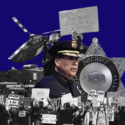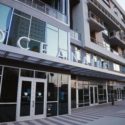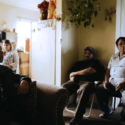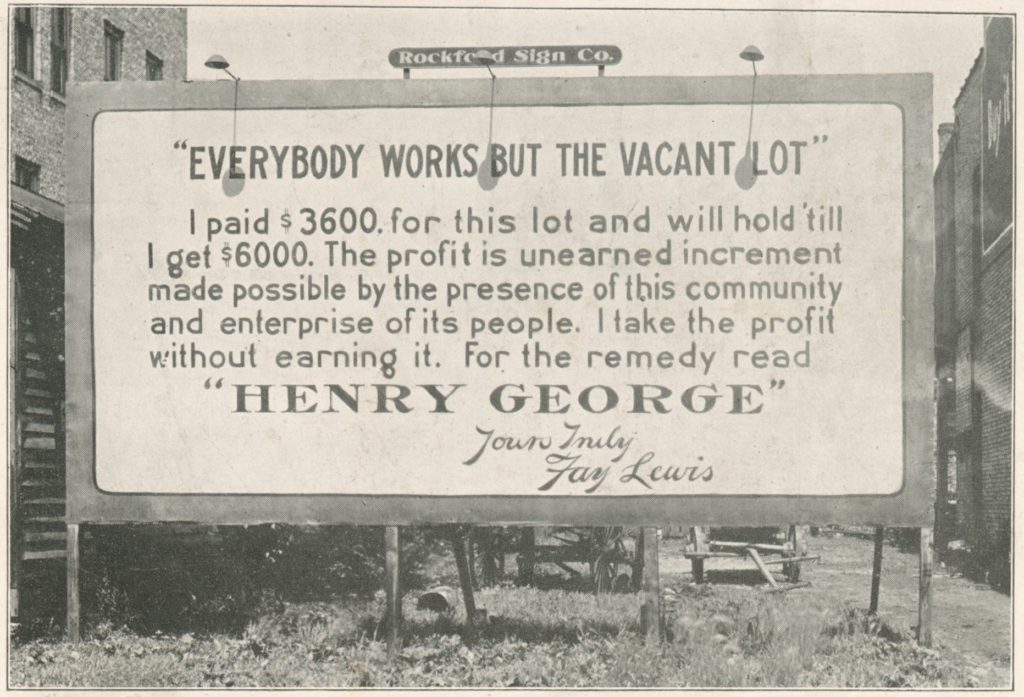Decolonizing Medicine: Ancestral Teachings Brought to the Forefront in Downtown Long Beach
by Erin Foley | Published October 28, 2019 in Arts & Culture
29 minute readThroughout the piece, keywords are highlighted and underlined. You can click the word to see a definition, notes and/or suggested readings related to the term.
Blanca Diaz has “young, young memories” of hopping on a bus with their family from neighboring South Gate to spend the day at the nearest beach. Soaking up the sun with their family, splashing in the ocean, the feel of the sand between their toes, the happy sounds of people all around them enjoying themselves; Blanca would fall in love with Long Beach from an early age. Later on, it would also be the vibrant queer culture that would help further compel Blanca to make the city their home.
“In high school I used to have my mom drop us off for the Pride parade. She didn’t even know what it was!” Blanca laughed.
Nowadays, Blanca co-facilitates an autonomous communal space on Seventh Street called Flora Y Tierra. They had a vision for a space for quite some time but did not quite imagine the twists and turns it would take to get there.
Blanca is open about their journey through drug addiction and abusive relationships and what they sum up as a series of “bad decisions” in their early twenties. Blanca started to notice the toll their “toxic relationships and relationship to addiction” had taken on their body in the mid 2000s around the age of 23.
“I was able to find the courage to leave that [lifestyle behind me], but I wasn’t spiritually or mentally connected. So my body was going through all these shifts and changes that were a little overwhelming,” Blanca said.
One of the most frustrating physical ailments Blanca experienced was an ear cyst that would recur each year.
“It would get so bad that I could barely lift my head. I would go to the doctor year after year and get it removed, and it would always come back,” Blanca said.
A friend recommended a “curandera”—the Spanish term for a traditional healer—who might be able to help Blanca put an end to the annual cyst surgery. Blanca agreed to go to the curandera’s home for a consultation.
“It was familiar when I think about my childhood … going to an elder’s home, and getting massaged or some sort of remedy given to us, maybe a tea. It felt very familiar and very warm … It felt like deja vu,” Blanca recalls. “She was able to care for me like an elder, like an abuelita.”
During the visit Blanca received an introduction to the medicinal properties of the burdock plant and was encouraged by the positive effects they felt soon after.
“Seeing how burdock helped me, that is when I kinda fell deep into that beautiful rabbit hole of just curiosity and commitment; commitment not only to myself but to the plants—to needing them and really building relationships with them,” Blanca said.
It has been more than a decade since that first visit and Blanca has not required any cyst surgeries since.
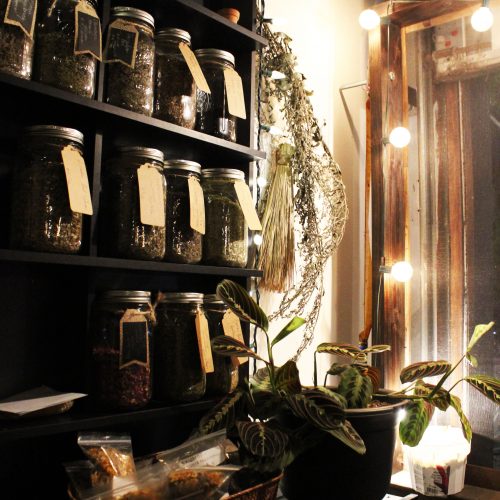
Blanca gravitated more and more to the traditional teachings of their ancestors and the native plants in the region. They started reflecting on the herbal knowledge they had picked up from their family during their childhood, such as how to pick mint from their yard to make a tea to help ease indigestion.
“My parents grew lots of plants when I was younger: chamomile, mint, citrus trees. The older I got, the less my parents were committed to that, and my parents eventually split,” Blanca said. “Once they split, I think the plant access was limited because everyone was in survival mode.”
After the meeting with the curandera, Blanca was encouraged to become reacquainted with medicinal herbs and even with their own family. They started asking their parents, their aunts, and their grandparents about their herbal traditions.
“The traditional stories began resurfacing, the questions just had to be asked, ” Blanca said. “Many of those stories come with trauma though, right? Often the traditional ways were used out of need, because there was no access. My father grew up in a really small town in Mexico and there were miles and miles between him and any services. To know how to tend to the family just was—it was a necessity.”
Blanca realized getting back to their roots (pun intended) through the plants of their ancestors and those which were native to Southern California. This was not only important for their overall healing but for the greater community. They started to connect with others that felt the same.
Under the moniker “Mama Maiz,” Blanca began growing and collecting herbs, making plant medicines, gathering groups in their home garden and around Long Beach, and traveling to community gatherings in other cities. Blanca offered native plant, herb, and permaculture knowledge, birth work and healing work, herbal blends, and other holistic, ancestrally-based guidance.
In 2016, Blanca completed year one of a two-year apprenticeship with nationally known Western herbalist Julie James at Green Wisdom Herbal Studies in Long Beach. (Blanca started the second year, too, but would leave the program early in 2017 when the opportunity to rent the space for Flora Y Tierra arose downtown.)
During this time, Blanca had been sharing information about the “decolonization of medicine” (and food) with their clients and loved ones. Blanca explains:
“Decolonization has a lot to do with going back to traditional knowledge, to reclaim it and feel empowered by it and to use it as a catalyst, as our power.
“I started focusing more on the ways of curanderismo; started focusing on what that meant for me as a descendant of people that practiced this medicine. [It means] a lot of plant medicine, but also a lot of elemental medicine. You’re working with the wind, with the water, with the earth, with fire; when you bring those elements together in your ceremony it really brings an opportunity to fall in deep gratitude to your ancestors.
“People are really falling back into the awareness that wherever it is that we are from, that our ancestors had a way of practicing healing. We all need to go back to that before we can heal collectively.”
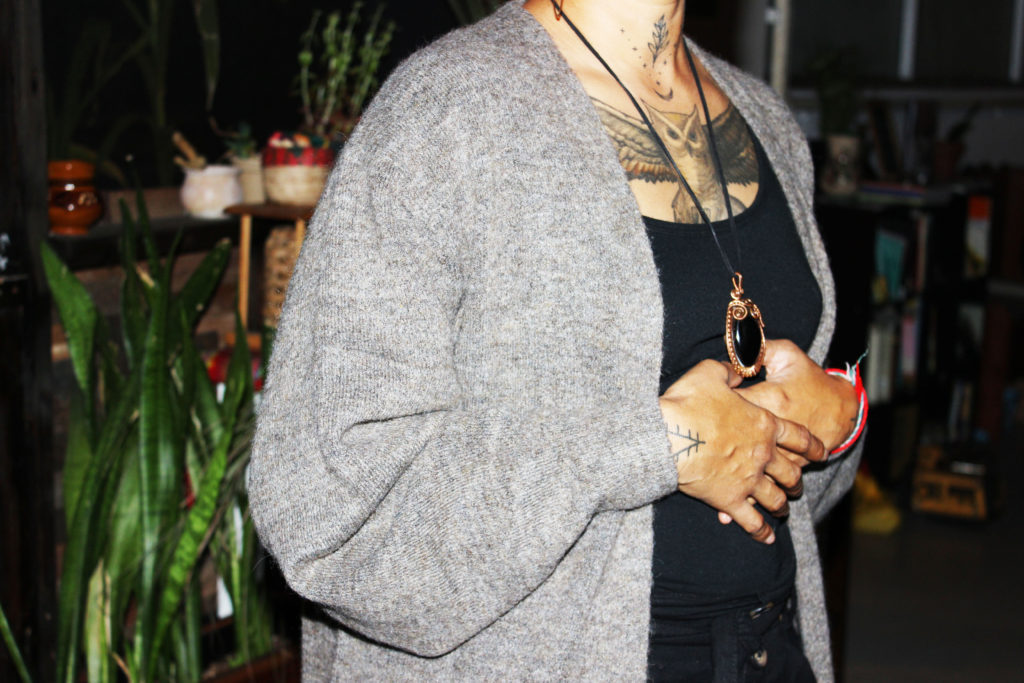
“It’s the voices within me that I am really trying to decolonize. I’m really trying to create a more intimate relationship with self outside of the violent language that I’d learned to use for myself and those around me. Our anger plays a role, our rage plays a role, and I am not trying to disconnect from it… I’m trying to be able to protect my energy so I can concisely and directly express my emotions."
Blanca recalls a time when they were suffering from excruciating pain and were not sure why. They didn’t know what was happening inside their body and it scared them enough to think they were dying.
Blanca’s mother drove them to the hospital where, after some tests, they were informed that Blanca had an ovarian cyst that had ruptured. The doctors at the hospital quickly wrote up a prescription for a painkiller. However, Blanca did not take the pills to ease the pain.
With the diagnostic knowledge given by the doctor, Blanca went home and used herbs that could relieve pain and herbs that they knew from their studies were helpful for the affected areas of the body.
“I don’t want to create any kind of shame around Western medicine or also the need for receiving care by Western medicine. I myself have found it extremely helpful, especially when tending to those who aren’t aware of what is happening within their body,” Blanca said. “The question is just, how do we use the knowledge that is being given to us and how can we advocate for ourselves in a hospital setting, right?
Blanca continues, “Because many of us can’t, we don’t have that language, we carry a lot of trauma and there is a lot of fear when it comes to Western medical care. I carry a lot of that with me as well … I feel it is extremely important, especially for folks of color practicing herbal medicine, to have both—to have indigenous knowledge and [Western medical] language to empower our community. So no shame. There have been many times where I have had to take medication to better myself for whatever reasons, be it mental care or physical care.”
While having an appreciation for western medicine’s diagnostic tools and emergency services, Blanca also gives caution towards relying solely on what is known as the medical-industrial complex.
“With the diagnostics being given to us then we know what protocol that we want to take forward, it being western medicine or traditional or herbal medicine. All of it provides us care, but it’s also important to think, how long are we going to be able to depend on the Western Medical Industrial Complex?”
Tomisin Oluwole
Face the Music, 2022
Acrylic on canvas
24 x 36 inches
Click here to check out our interview with Tomisin Oluwole, a literary and visual artist based in Long Beach.
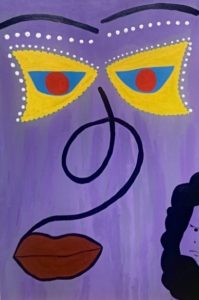
Instead of gunking up our site with ads, we use this space to display and promote the work of local artists.
Blanca asks, “Because when shit goes down [in this country], medicine [likely] isn’t going to be readily available, right? Our prescriptions aren’t going to be able to be accessed and we really need to start building the knowledge and the know-how of caring for oneself.”
Flora Y Tierra Takes Root
In November 2017, after years of traveling and being inspired by the collectives, co-ops, and communal spaces they encountered around the country, Blanca and partner Cris Sarrabia opened up “Flora Y Tierra,” Spanish for Flower and Earth. Blanca explains that the name reflects their reverence to “the flora, the plants, of a particular region, habitat, or geological period.”
Blanca offers their services as an herbalist and a birth worker and Cris hosts one of Long Beach’s only men’s healing circles. They are both community organizers, activists, and plant lovers that share their expansive knowledge of permaculture and growing native plants and food.
“With Flora Y Tierra, Cris and I are doing whatever we can here to create communal spaces and build a community that can find [healthy] ‘development’ outside of the [city-led] downtown development that, in a sense, is going on out of our control,” Blanca says. “[But not totally because] we can have conversations about it and we can come up with ideas and solutions to challenge that, as a community.”
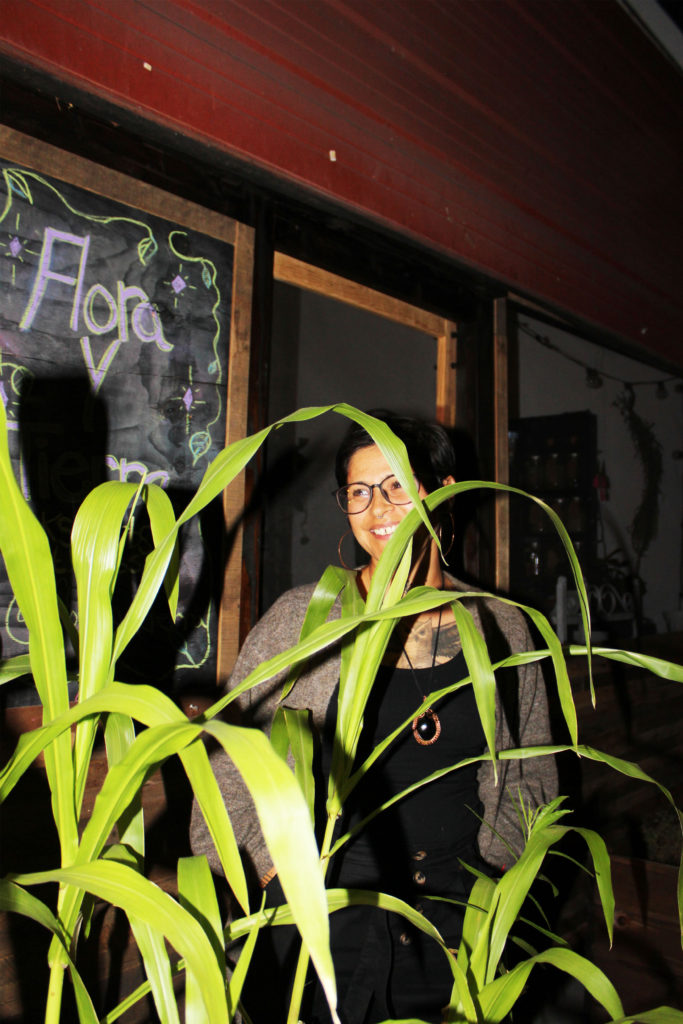
Flora Y Tierra offers holistic healing workshops, cultural events, and herbal guidance, as well as a free multimedia library. Everything is donation-based and/or offered on a sliding scale in an effort to keep it accessible and of direct benefit to the community.

To introduce and familiarize the youngest generation with the flora and fauna around them, Blanca also leads a monthly “Little One Nature Walk.” Teaching respect for land, ancestors, and indigenous populations to these young humans reminds Blanca why they do all this in the first place.
“When [the children] ask the plants for permission, when they ask the land for permission to walk on the trail, when they leave offerings to these plants and acknowledge that we are on Tongva land, you can’t compare that to anything else. That’s why we do the fucking work, it’s not about us, it’s about the generations that are growing,” Blanca said.

Blanca starts every event or ceremony by honoring the aforementioned native people of the land—in Long Beach, that means the Tongva and Ajachemen people.
“Many people don’t know that underneath the concrete there is life. They also don’t know that the Tongva aren’t federally recognized. We want to help provide you with that deep breath in the city to help you remember we are standing on sacred ground,” Blanca said. “It is important to me to have the blessing and support of indigenous elders in the community, it is important to me to honor them.”
Blanca is adamant about the need for prioritizing space for marginalized and traumatized populations. Some of Flora Y Tierra’s events are explicitly only for queer and/or transgender, Black, indigenous, people of color (QT BIPOC). Flora Y Tierra also hosts many events that are open to all community members, including regular open hours from 4 – 8 p.m. on Tuesdays and Thursdays.
“I really wanted to create a space where QT BIPOC folks can come and be fully transparent,” Blanca said. “In their anger, in their rage, in their joy, and in their sadness, and be able to support one another through that and empower one another.”
Blanca says it is important for there to be a space amidst the gentrification going on in downtown where marginalized people feel accepted, a space that acknowledges and helps to heal the ancestral and intergenerational trauma carried by QT BIPOC.
“There’s been this deep need to survive and through that survival, sometimes we activate the pain within us. The pain that has come through colonization, the pain that comes from disconnection to plant medicine and culture and language. We have been fighting white supremacy, we have been fighting racism, including environmental racism for many, many years,” Blanca said. “I think it is important that we come together and we have spaces that we can fully be ourselves and voice ourselves without having to feel fear around having to explain ourselves or defend ourselves through ‘white fragility.’”
The rarity of there being a healing space that offers special events specifically for people of color that identify as queer or transgender has not gone unnoticed in the community.
“To find a healing space that is intentionally created for and by QT POC can be challenging,” Nenu Elle said, who has attended many of their events. “Flora y Tierra creates this space that challenges us to use inclusive language and intentionality in gatherings, that makes it welcoming and open for all of us to actively participate, build, and practice healing in community.”
Angelica Tonantzin, a long time friend of Blanca’s and a holistic healer and guide, loves how Flora Y Tierra also prioritizes the honoring of ancestral teachings.
“There is so much love and power there. I mean as soon you walk in their space you can feel the medicine of many ancestors activating and guarding [Flora Y Tierra]. It’s a true space for intergenerational and circular healing (honoring past, present, and future),” she wrote in an email. “It’s a space and mission that I hope continues to be passed on for future generations.”
Flora Y Tierra hosts a QT BIPOC Healing Circle the second Wednesday of every month and for the past three years has also co-hosted a weekend-long intensive doula training with Birth Workers of Color.
Their most recent Doula of Color training was held the first weekend of October and was the fourth cohort to convene. Doulas are birth workers that help to support, guide, and act as an advocate for birth parents through their pregnancies, labor and delivery, postpartum health, the health of their newborns. Doulas may also help people that are having an abortion.
Blanca is the “co-creatrix,” along with their fellow birth worker Stevie Merino, of the Birth Workers of Color Long Beach collective. Stevie’s ancestral homelands are Guam and Puerto Rico, which are both occupied territories of the United States and so she refers to herself as “US-owned.” Stevie and Blanca each share teachings from their respective ancestral homelands and also invite a diverse group of other healers and educators to impart their wisdom as well.
The intention behind the Doula of Color training is to “create reciprocity within the culture of birth work,” Blanca said. The students, who are also people of color, receive valuable ancestral knowledge that has historically been shrouded by commodification or has been watered down, according to Blanca. It is taught with the due diligence and respect it deserves, and in return, teachers get the compensation they deserve: reciprocity.
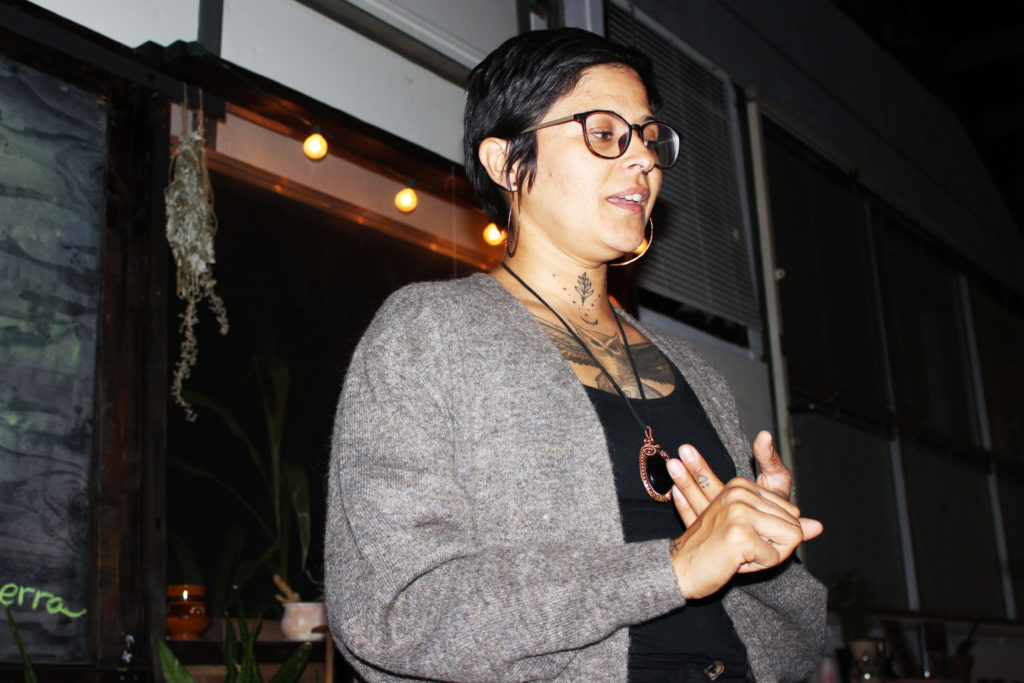
“A lot of our western medical knowledge comes from the testing, sterilization, and killing of Black and indigenous women … We thought, how can we uplift those communities here today and share those truths—even if it be uncomfortable or challenging—but also create an opportunity for people to be empowered by having that knowledge?” Blanca said. “Doula of Color training is a three-day intensive education on the raw, uncomfortable facts of how women of color, the trans community, and the non-binary community are challenged within the Western birth-work world.”
There are many disparities still to this day between white women and women of color giving birth. Even rich, high-profile Black women like Serena Williams and Beyoncé suffered through near-tragic health scares during their recent pregnancies. Harvard Public Health published an article recently talking about the higher rate of deaths and near deaths for Black women titled “America is Failing Its Black Mothers.” Blanca, Stevie and the Birth Workers of Color help their students confront these disparities with ancestral knowledge, trans and non-binary language, and the language needed to navigate the healthcare system with a thoughtful, holistic, and empowered approach.
Growing Community
If knowledge and determination were all that were needed, the future of Flora Y Tierra would be worry-free, since Blanca and Cris both are strong representations of those traits.
However, money is always a constant need for any rented space that holds donation-based events, along with the need for volunteers. Blanca says they are trying to get a crowd-sourcing campaign off the ground for the space in late October. Folks with web or video skills that are interested in helping them out should send a message.

“The state of growing cities right now—gentrification, rents going up—it’s becoming challenging for so many people, but that’s an even bigger reason for us to stay present in this space,” Blanca says. “The space is something that isn’t necessarily in our budget but we make it work. We are calling in for collaboration right now; we need the community’s help so we can keep investing back into the community.”
Reflecting back on the past couple years since they opened their doors, Blanca is a little weary of the struggles still ahead but always hopeful and grateful.
“There are many challenges but there is so much damn joy; it’s been so, so good. It’s been so good for the folks that come through; it’s been so good for me. I need this medicine just as much as anyone else does, I need this space just as much as anybody else does. It’s been really special. And this is something I’m not creating alone. I’m creating it all alongside community.”
Blanca and Cris invite the public to join them in honoring ancestors for Dia de los Muertos and celebrating their second anniversary on Nov. 1 from 7 – 11 p.m. at Flora Y Tierra.
Flora Y Tierra is located at “811 E. 7th St., Long Beach, Tongva Land.” Donations can be sent to Venmo @floraytierra. Send questions and offers for support to: floraytierra@gmail.com.
Flora Y Tierra offers open hours from 4 – 8 p.m. on (most) Tuesdays and Thursdays. Here are a few other reoccurring and upcoming events:
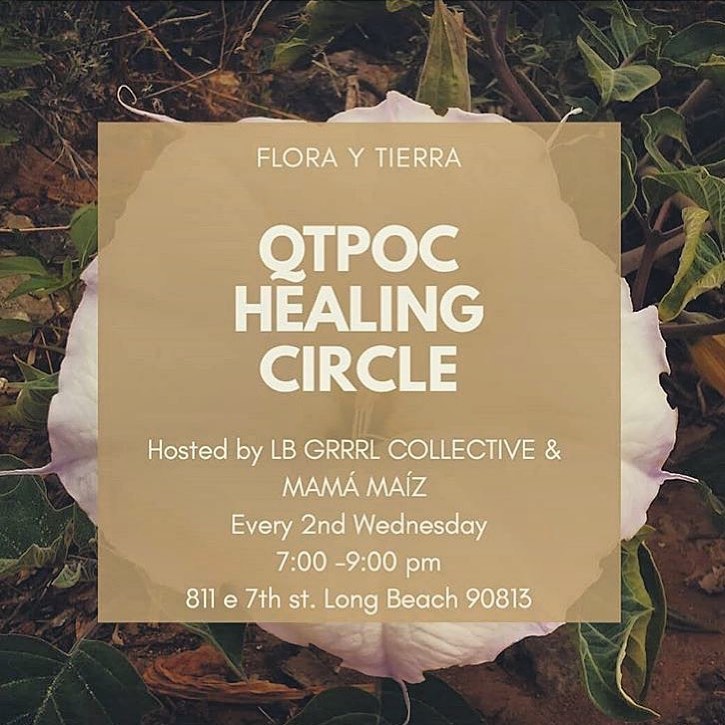

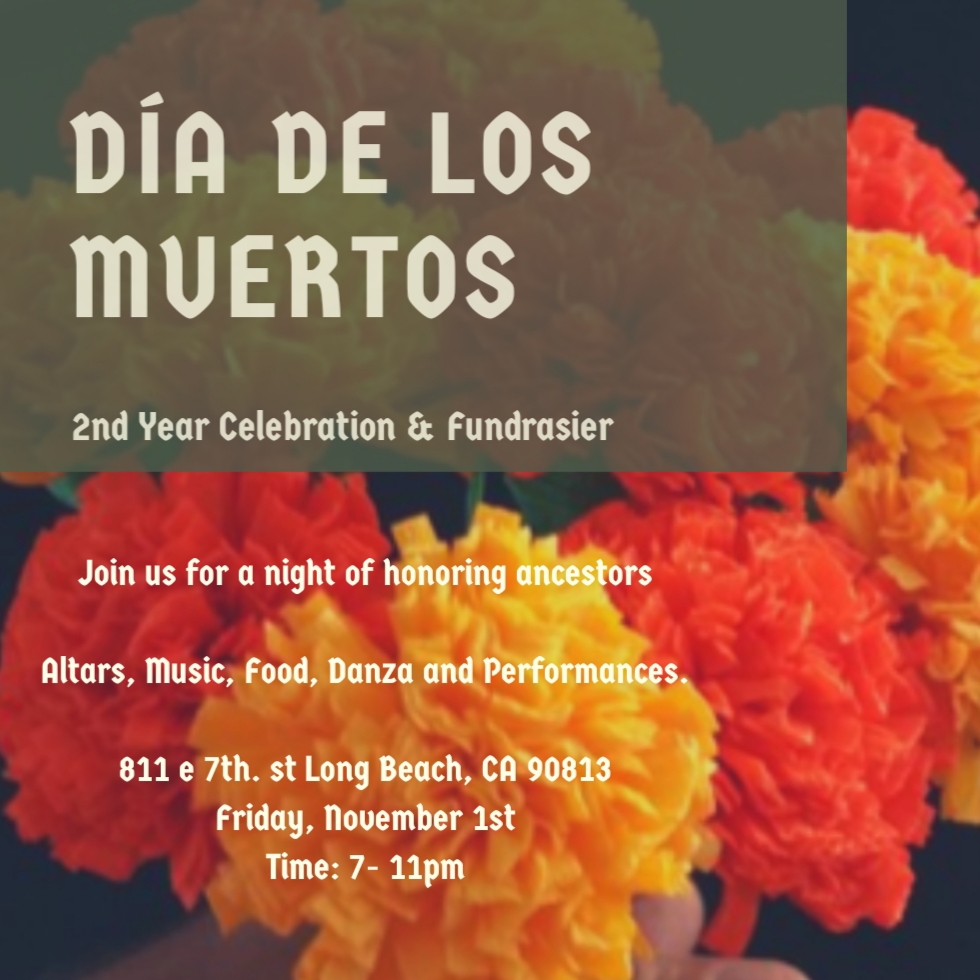

Help Us Create An Independent Media Platform for Long Beach
We believe that what we are trying to do here is not only unique, but constitutes a valuable community resource. We are dedicated to building a fiercely independent, not-for-profit, and non-hierarchical media organization that serves Long Beach. Our hope is that such a publication will increase civic participation, offer a platform to marginalized voices, provide in-depth coverage of our vibrant art scene, and expose injustices and corruption through impactful investigations. Mainly, we plan to continue to tell the truth, and have fun doing it. We know all this sounds ambitious, but we’re on our way there and making progress every day.
Here’s what we don’t believe in: our dominant local media being owned by one of the city’s wealthiest moguls or a far-flung hedge fund. We believe journalism must be skeptical and provide oversight. To do so, a publication should remain free from financial conflicts of interest. That means no sugar daddy or mama for us, but also no advertisements. We answer to no one except to our readers.
We call ourselves grassroots media not only because we are committed to producing work that is responsive to you, dear reader, but because in order for this project to continue we will also need your support. If you believe in our mission, please consider becoming a monthly donor—even a small amount helps!


 erin@forthe.org
erin@forthe.org